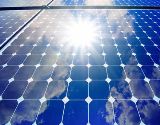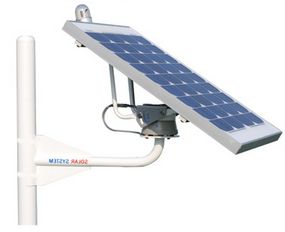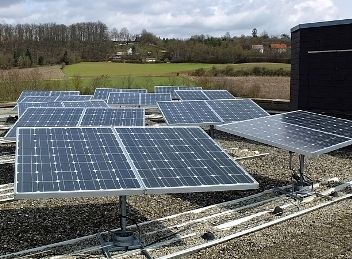The practice of using solar modules on rotating mechanisms
The article discusses the issue of the practical application of solar panels with their installation on rotary mechanisms for tracking the sun.
 As you know from the school physics course, solar panels made on the basis of photovoltaic cells (PV modules) — work better the more sunlight enters their plane of perception, this is an indisputable axiom.
As you know from the school physics course, solar panels made on the basis of photovoltaic cells (PV modules) — work better the more sunlight enters their plane of perception, this is an indisputable axiom.
It is also known that the sun moves across the firmament, beginning its movement and accordingly illuminating everything on our planet, "early in the morning" and setting behind the firmament — at night. That is why it is very important, just to get the maximum amount of solar energy from the photo modules of solar panels, that they are directed towards the sun as long as possible and that the angle of their inclined plane to the sun is as close to 90 ° as possible.
The essence of the sun tracking system.
The work of the mechanism of the sun tracking system is its ability to track its trajectory in the sky, as well as to constantly turn, following it, from early morning until late at night.
Structurally, the mechanisms of the solar tracking system, on which the photovoltaic solar cell modules are mounted, are made of stainless steel and aluminum tubes and profiles. In motion, the sun tracking system is powered by the use of an electric motor and a reduction gear that reduces its speed. The gearbox itself is connected to a helical gear with a rotating mechanism and fixed modules of the solar battery.
Through the control unit of this system, the movement of the celestial "body" above the horizon, with the corresponding turn in its direction, of the rotating mechanism with the solar battery modules placed on it is tracked.
Complete sets of rotary mechanisms for solar panels possible.
For ease of use by users, rotary mechanisms for solar modules in various configurations are manufactured industrially.
Depending on the configuration and priority of users, these rotary mechanisms can be equipped with DC motors of the EC series for a voltage of 24V or 12V, as well as with single-phase motors of the MY series with a supply voltage of 220V.
Depending on the size of the solar panel modules and the required speed of their rotation, it is structurally designed to use different types of worm gearboxes (CM, CMR series) or planetary gearboxes of the «P» series.
Regardless of the configurations of the rotating mechanisms of solar batteries with electric motors and gearboxes, in any case, the photovoltaic cells of the solar modules installed on them, due to the possibility of their rotation, will always be directed to the sun's rays in a perpendicular plane.
For your information, one of the pioneers in the production of high-quality rotating gears based on the use of modern "gear motors", which always guarantee the positioning and precise movement of the solar panels mounted on them, behind the sun, is TRANSTECNO trading company.
What does the installation of solar modules on controllable rotary mechanisms give?
As you know, the actual power of solar panels and the magnitude of their charging current directly depend on the angle of sunlight falling on these modules, as well as on the "density" of the incident sunlight. Proceeding from this, it becomes clear that finding the modules of the solar batteries in a stationary, in some one position towards the sun - brings a much smaller effect than with the same modules, but "turned" behind the sun.
Installing the solar modules on the mast using a rotating mechanism allows us to always keep our solar panels oriented as far as possible in the angle of inclination and in the direction of travel behind the sun. Such a solution to the problem, which consists in constantly maintaining the plane of installation of solar modules located on a rotating mechanism in a direction perpendicular to the sun's rays, allows us to use the solar energy delivered to our modules as efficiently as possible.

The use of photomodules on rotary mechanisms is quite effective
Conclusion.
Summarizing our above reasoning, we can say the following. Thanks to the practical application of installing solar batteries on rotary mechanisms and their constant orientation to the sun, both in terms of the angle of incidence of the sun's rays on the solar modules and in the direction of the sun's movement across the sky, it is possible to achieve significantly increasing the efficiency of solar cells.
According to experts, such "modernization" of existing solar installations compared to "non-rotating" installations can increase their electricity production in winter by about 10%, and in summer by 40%.

